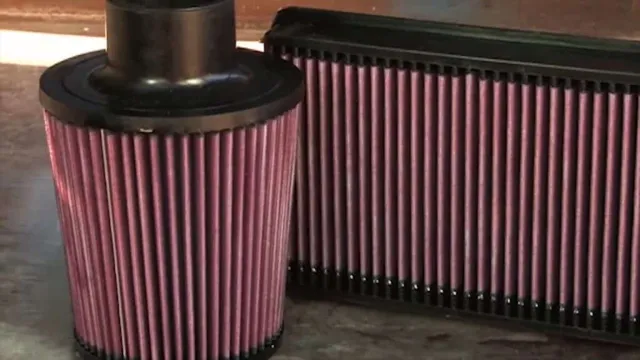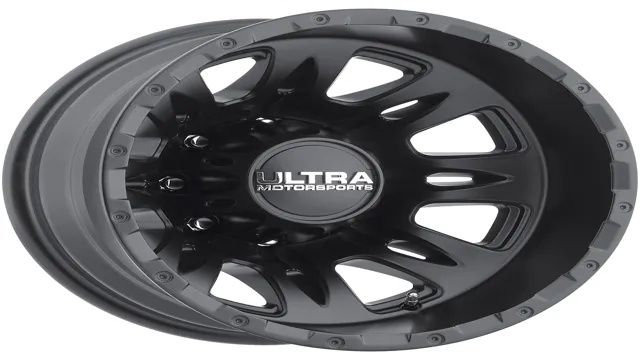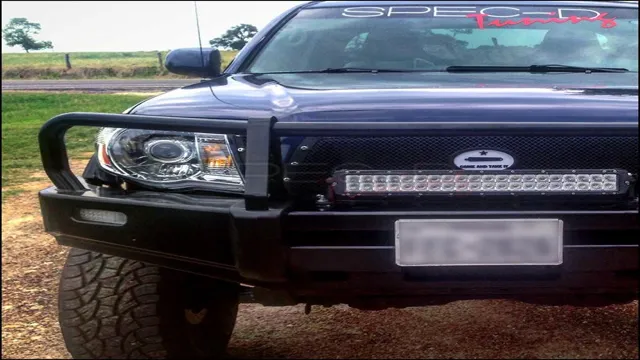Quick and Easy Guide: How to Dry and Recharge Your K&N Air Filter in No Time!
If you’re a car enthusiast, you know how important maintaining your filters, especially the air filter, is. One of the most popular air filters in the market is the K&N air filter. However, these high-performance filters need proper cleaning and drying to function well.
So, how do you dry your K&N air filter fast? In this blog post, we’ll show you some simple yet effective ways to dry your K&N air filter in no time. Whether you’re a professional driver or simply an everyday car owner, you’ll find these tips useful in prolonging the lifespan of your K&N filter. So, let’s get started!
Why You Need to Dry Your K&N Air Filter
If you have a K&N air filter installed in your vehicle, it’s important to remember that you need to dry it after cleaning it. Neglecting this step can result in reduced filter efficiency, which can negatively impact your vehicle’s performance. Luckily, drying your K&N air filter is a quick and simple process.
First, use compressed air to blow out any excess water from the filter element. Then, leave the filter out in the sun (if possible) or in a warm, dry area for a few hours to ensure it is completely dry. It’s essential to make sure the filter is completely dry before reinstalling it, as any moisture left in the filter can cause damage to your engine.
By following these steps, you can ensure that your K&N air filter is functioning at optimal levels and that your vehicle is performing at its best.
Water Damage to Your Engine
Water damage can wreak havoc on your engine, causing serious and often irreversible damage. That’s why it’s vital to ensure your engine is protected from the elements, especially in wet or humid conditions. One crucial component of engine protection is your air filter, and in particular, your K&N air filter.
When water enters your engine through the air filter, it can cause significant and costly damage, which is why it’s essential to dry your K&N air filter. This critical step can help keep your engine running smoothly and extend its lifespan. So if you’ve been driving in wet conditions or suspect water damage to your engine, be sure to check your air filter and dry it thoroughly to ensure your engine is well-protected and running at its best.
Reduce Engine Performance
If you want to extend the life of your car’s engine and get peak performance, you need to start taking care of your K&N air filter. Air filters play a crucial role in preventing dirt, dust, and debris from entering the engine, but over time, they accumulate dirt, and that can negatively impact engine performance. When an air filter is clogged, it can restrict airflow, leading to a drop in acceleration, reduced gas mileage, and increased emissions.
That’s why it’s important to clean and dry your K&N air filter regularly. Drying your air filter ensures that it’s not just clean, but also free from moisture that can seep into the engine, causing damage. To dry your K&N air filter, give it enough time to dry naturally in the sun or use an air compressor to blow away the moisture completely.
With a clean and dry K&N air filter, your engine will run smoothly, and you’ll get better gas mileage, improved throttle response, and a longer-lasting engine.
Step-by-Step Guide to Drying Your K&N Air Filter
K&N air filters are widely known for their high-quality and performance. However, after washing your K&N air filter, you need to make sure it’s completely dry before reinstalling it. Drying your K&N air filter is crucial to avoid any potential damages or reduced efficiency.
So, what’s the best way to dry your K&N air filter fast? Here’s a step-by-step guide to help you get the job done quickly and effectively. Firstly, shake the filter gently to remove any excess water. Be careful not to damage the delicate filter material.
Afterward, use a soft clean towel to gently pat the filter. This will help to remove any remaining larger water droplets. Next, find a sunny spot or use a fan to allow air to flow through the filter.
This ensures that it dries more quickly. Remember to place the filter in an area where there are no pollutants or dirt around. In addition, you can also use a low-pressure air compressor to blow-dry the filter.
Hold the compressor nozzle at least 6 inches away from the filter’s surface and move it gradually across the filter pleats. This will help to remove any water remaining and speed up drying time. However, avoid using high-pressure air that may damage the filter material.
For a deep, effective, and fast cleaning, you can also use the K&N Power Kleen cleaner and K&N water repellent to dry your filter more quickly. These products will help to remove any dirt and grime and ensure your filter dries fast and stays cleaner for longer. Once the filter is dry, it’s ready to be reinstalled and set back to work.
Step 1: Remove the Air Filter from Your Vehicle
When it comes to maintaining your vehicle, regularly cleaning your air filter is a crucial part of the process. In this step-by-step guide, we’ll go over how to dry your K&N air filter. The first step is removing the air filter from your vehicle.
This may require the use of tools such as screwdrivers or pliers, depending on your vehicle’s make and model. Once you’ve removed the air filter, it’s important to inspect it for any damage or excessive dirt buildup. If the filter is damaged or too dirty, it may need to be replaced.
Assuming your filter is in good condition, the next step is to dry it thoroughly before reinstalling it. But be careful not to use compressed air or high-pressure water, as this can damage the filter. Rather, allow the filter to air dry completely before putting it back into your vehicle.
By following these steps, you will help ensure that your K&N air filter performs optimally and keeps your vehicle running smoothly.
Step 2: Gently Tap off Excess Water
When it comes to cleaning and maintaining your K&N air filter, it’s essential to know the proper steps to take. One crucial step is to gently tap off excess water after washing your filter. This can be easily accomplished by lightly tapping the filter on a hard surface or using a soft towel to remove any excess water.
It’s important to avoid using compressed air to dry your filter, as this could damage the delicate filter material. Once you’ve removed any excess water, allow your filter to air dry completely before reinstallation. By taking care to properly dry your K&N air filter, you can extend its lifespan and enjoy optimal performance from your vehicle.
Step 3: Use a Shop Vac to Remove Remaining Water
If you need to dry a K&N air filter, it’s important to do it properly to avoid damaging the filter. The third step in the process is to use a shop vac to remove any remaining water after the filter has been rinsed. Make sure to vacuum both sides of the filter to get rid of all the water.
This step is crucial for drying the filter thoroughly because if any water remains, it can cause mold or mildew to grow on the filter, which can then spread to your engine. Avoid using a traditional vacuum cleaner because it won’t be able to handle the moisture. Using a shop vac ensures that you can get all the water out and dry the filter completely.
By following these steps, you’ll be able to make sure your K&N air filter works as good as new.
Step 4: Allow the Air Filter to Air Dry
Once you have finished cleaning your K&N air filter, the next step is to allow it to air dry. This is a crucial step, as you don’t want to trap any moisture in your air filter, which can damage its efficiency and performance. To air dry your air filter, simply place it in a well-ventilated area and let it sit for a few hours.
Depending on the weather and humidity levels, this process can take between 1 to 3 hours. It’s important not to hasten the drying process by using heat sources such as hairdryers or ovens, as this can damage your air filter’s rubber gaskets and seals. Instead, let nature do it at its own pace.
Once your air filter is completely dry, it’s time to re-oil it and get it ready for its next use. Remember, proper maintenance and care of your K&N air filter can significantly extend its lifespan and improve your engine’s performance.
Tips and Tricks to Speed Up the Drying Process
Are you wondering how to dry your K&N air filter fast? Here are some tips and tricks to help speed up the drying process. First, remove the air filter from the vehicle and gently tap it to remove any loose debris. Then, use a compressed air gun to blow out any remaining dirt and dust.
Next, place the air filter in a well-ventilated area and allow it to air dry naturally for a few hours. Alternatively, you can use a hair dryer on the low heat setting to speed up the process. Just be sure to hold the dryer a few inches away from the filter and move it around to evenly heat all areas.
Remember, it’s important to fully dry the filter before reinstallation to avoid any moisture damage to your engine. So, be patient and use these tips to ensure a quick and safe drying process for your K&N air filter.
Use a Fan to Circulate Air Around the Filter
Drying a filter can be a tedious process, especially when you need it back in service ASAP. But there is a simple trick that can make the process faster and more efficient – use a fan to circulate air around the filter. By placing a fan next to the filter, you create a constant flow of air that helps to evaporate moisture quicker.
This trick is especially effective if you need to dry multiple filters at once! Just make sure to position the fan at a safe distance from any flammable materials and away from direct sunlight. With this simple tip, you’ll be able to cut down your drying time and get your filter back in service in no time!
Use a Heat Gun or Hair Dryer on Low Heat
If you’re tired of waiting for your project to dry, using a heat gun or hair dryer on low heat can be a great solution to speed up the process. This technique is perfect for smaller projects that require a quick dry time. By using this method, you’ll need to hold the heat gun or hair dryer at a safe distance and move it around the item until it is dried thoroughly.
Be sure to keep the heat on low to avoid damage to your project and to prevent the risk of any accidents. This technique is ideal for materials such as paint, glue, and adhesives. With just a few simple steps, you can save time and become more efficient with your projects.
So next time you’re in a hurry, grab your heat gun or hair dryer and speed up the drying process.
Conclusion
In conclusion, when it comes to drying your K&N air filter, the key is to strike a balance between efficiency and effectiveness. Sure, you could throw it in the dryer or use a hair dryer, but that just risks damaging the filter and ultimately hinders its performance. The best approach is to let nature do the work, but with a little help from our friend gravity and some strategic placement in a sunny, well-ventilated area.
With these tips, you’ll have a dry and ready-to-go K&N air filter in no time. So go ahead and put the pedal to the metal (responsibly, of course), knowing that you have a fast-drying air filter by your side!”
FAQs
What is a K&N air filter?
A K&N air filter is a washable and reusable air filter that is designed to fit into your vehicle’s factory air box. It is made up of layers of oiled cotton gauze that captures dirt and dust particles.
Why is it important to dry a K&N air filter fast?
It is important to dry a K&N air filter fast because if it is not dried properly, it can cause water damage to your engine. Water can mix with the oil on the air filter and create a sludge-like substance, which can clog the engine.
How long does it take for a K&N air filter to dry?
The time it takes for a K&N air filter to dry depends on how humid or wet the environment is. In general, it can take anywhere from a few hours to overnight for the air filter to dry completely.
What are some tips for drying a K&N air filter fast?
One tip for drying a K&N air filter fast is to use compressed air to blow out any excess water from the filter. Another tip is to use a hair dryer on a low heat setting to expedite the drying process. You can also place the air filter in a dry and warm location to speed up the drying process.






One Comment
Comments are closed.